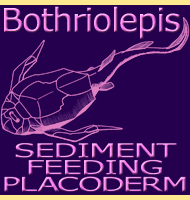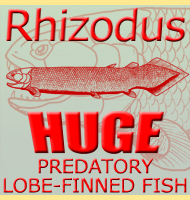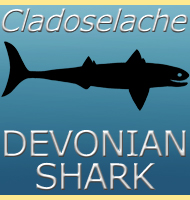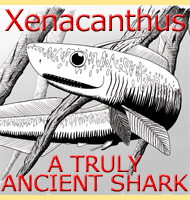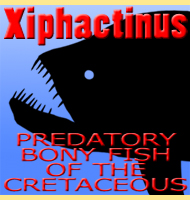


Dinichthys
Name:
Dinichthys
(Terrible fish).
Phonetic: Di-nik-fiss.
Named By: John Strong Newberry - 1873.
Synonyms: Ponerichthys.
Classification: Chordata, Placodermi,
Arthrodira, Dinichthyloidea.
Species: D. hertzeri,
sometimes spelled
herzeri (type).
Diet: Carnivore/Piscivore.
Size: Uncertain because only the head portions are
known, possibly up to the same size as Dunkleosteus.
Known locations: USA, Canada.
Time period: Givetian through to Famennian of the
Devonian.
Fossil representation: Well-known but only from the
jaws and bony head armour.
Like
with may early discovered prehistoric animals such as the dinosaur
Megalosaurus,
and the pterosaur
Pterodactylus,
Dinichthys suffered
from the waste basket taxon effect. This is where sets of remains
that look similar to the holotype are assigned to the genus, but upon
closer inspection they turn out to actually represent different
animals. This has resulted in the long list of Dinichthys
species
being split up into separate genera including Eastmanosteus,
Titanicthys,
and the increasingly famous Dunkleosteus.
Today only
the original type species of Dinichthys hertzeri
(sometimes spelled
as herzeri) remains valid for the genus.
As
an armoured placoderm
fish Dinichthys would have
been an apex
predator at the top of the food chain. Sharks were still very small
in comparison, and the giant marine reptiles would not start
appearing until the Triassic period. Many of the placoderm fish had
hard bony plates and the sharp powerful jaws of Dinichthys
were an
effective counter to this armour. Biomechanical studies have revealed
the related Dunkleosteus to have a multi-ton bite
force, and it's
perfectly reasonable to expect the same proportional bite force in
Dinichthys.
Dinichthys
had the same kind of bony armour itself, although it
appears that from fossil evidence of both Dinichthys
and the predatory
placoderm group in general that this armour was only present upon the
head and jaws. It may be that instead of being there for protection,
the bony plates provided rigid fixing and support for the powerful
biting muscles.
Dinichthys
is often confused with Dunkleosteus because of
their similar
appearance, and this is not helped by the fact that reproductions of
Dinichthys were for a long time based upon D.
terrelli,
the species
that was split from Dinichthys to form the Dunkleosteus
genus.
Further reading
- Notes on Dinichthys terrelli with a restoration -
The Ohio Naturalist
8 (8): 363–369 - E. B. Benson - 1908.
- Two new species of Dunkleosteus Lehman, 1956,
from the Ohio Shale
Formation (USA, Famennian) and the Kettle Point Formation (Canada,
Upper Devonian), and a cladistic analysis of the Eubrachythoraci
(Placodermi, Arthrodira) - Zoological Journal of the Linnean Society
159 (1): 195–222. - R. K. Carr & V. J. Hlavin - 2010.
----------------------------------------------------------------------------
Random favourites
 |
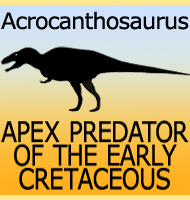 |
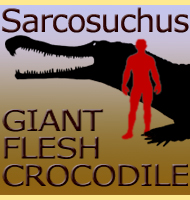 |
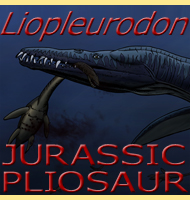 |
